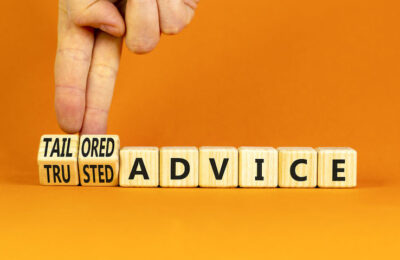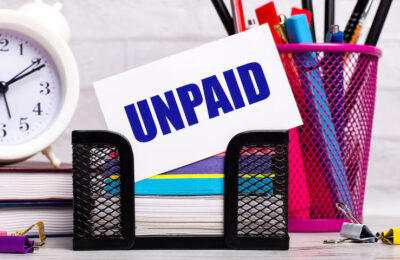Email marketing mistakes to avoid (Part 2)
I recently posted the first four of the top eight things I think you should never do with email marketing campaigns.
Since then, no-one has sent me an inflammatory email in response, thoughtlessly given away my email address by putting it in a long carbon-copy list, or even sent me large chunks of an email trail that wasn’t meant for my eyes.
For my own part, I haven’t clicked on an email link without being 100% sure of who the sender is.
It’s almost as though my post is working! So, just in case it is, here are my final four tips for making sure that your emails don’t come back and bite you.
5. Forget to make sure “Bill” is the right Bill
Tiredness may kill, but it can also land you in some very hot water if you fire up Outlook (or the email client of choice) when you haven’t had enough sleep.
I’m reminded of someone I sometimes work with, who years ago used to work in education. He’d just got a new job, and with it being 1999, it was the first job where email had become part of his daily routine.
Two days in, when he was tired and getting to grips with this new-fangled email thing, he received an email from his friend Bill.
It was about a topic he was astonished Bill knew anything about.
So he fired off a quick email. It read, simply “OK Bill, but how the **** did you know that?”
The reply came back: “I don’t know. How do you think?”
Only then did the poor fellow realise he had sent his email to the wrong Bill.
This was not Bill, his university friend, flatmate and erstwhile best man.
No, this was the Bill who worked for the Times Educational Supplement. The Bill he had approached in the hope of getting some favourable coverage for a new project.
The wrong Bill took the mistake in good humour. But not everyone would have and boy, can this prove embarrassing! So before you hit ‘send’, always make sure that the Bill (or Sally or Aisha) you have selected is the right one.
Oh, and please don’t swear in emails from your professional email address. It’s not classy and it can come back to haunt you. That’s if it doesn’t get scanned and rejected automatically by your mail monitor and forwarded directly to your boss…which leads me nicely on to…
6. Think that Big Brother (or management) isn’t watching you
Email is a highly insecure way of sending information. It can easily be intercepted and diverted without you knowing a thing.
For that reason, always take steps to keep confidential information in emails to a minimum. If you have to email sensitive documents, always use password protected PDFs. If you routinely have to send confidential information, consider an end-to-end email encryption service such as PGP, which makes it much harder for emails to be intercepted.
As well as being careful with confidential information, always be very guarded on what you say about your colleagues. I’m reminded of a charity that was undergoing a merger with another. Its leadership team was split into two warring factions. The only problem was that the IT manager favoured one of these two factions – the one that didn’t use email to discuss the character flaws of the other. I think you can probably guess what happened next! So if you have something unpleasant to say, you are asking for trouble if you write it in an email. Just don’t.
7. Fail to personalise emails
This is just basic politeness. Nothing is guaranteed to make a recipient reach for the delete button than a generic email which starts ‘Dear Sir / Madam’, or ‘To whom it may concern’.
Whether you are sending marketing emails, or personal messages, always address the recipient by name. You can do this easily even with bulk email – software like Mailchimp or Constant Contact allows you to add fields to your email, meaning you can personalise it automatically from your contacts database.
Adding in other details using fields can also make your marketing emails more relevant – try adding in the recipient’s job title, company name and other personalised information in the body of the email to show you have made the effort to tailor your message.
8. Forget to add a call to action (sales and email marketing)
This is akin to a salesman spending half an hour telling you about their product, and then failing to ask you to buy it.
Most marketing emails require the recipient to take action – whether it’s buying a product, downloading an eBook or simply adding a date to their online calendar. Always make it clear at the end of your email what you want the recipient to do, or the chances are that they won’t do it.
And while you’re at it, always make it easy for a recipient to contact you in the way they prefer. Use your email signature to provide your postal address, phone number, LinkedIn and Twitter profiles and Skype number as relevant.
So, there we have it. My top eight things to avoid when using email. Do any of them strike a chord? Or are there other email no-no’s you’d recommend readers should avoid? Get in touch to share them – we’d love to hear from you.
About Jon Pryse-Jones
Since joining THP in 1978, Jon Pryse-Jones has been hands on with every area of the business. Now specialising in strategy, business planning, and marketing, Jon remains at the forefront of the growth and development at THP.
An ideas man, Jon enjoys getting the most out of all situations, “I act as a catalyst for creative people and encourage them to think outside the box,” he says, “and I’m not afraid of being confrontational. It often leads to a better result for THP and its clients.”
Jon’s appreciation for THP extends to his fellow team members and the board. “They really know how to run a successful business,” he says. He’s keen on IT and systems development as critical to success, and he continues to guide THP to be at the cutting edge and effective.
Read more about Jon Pryse-Jones











